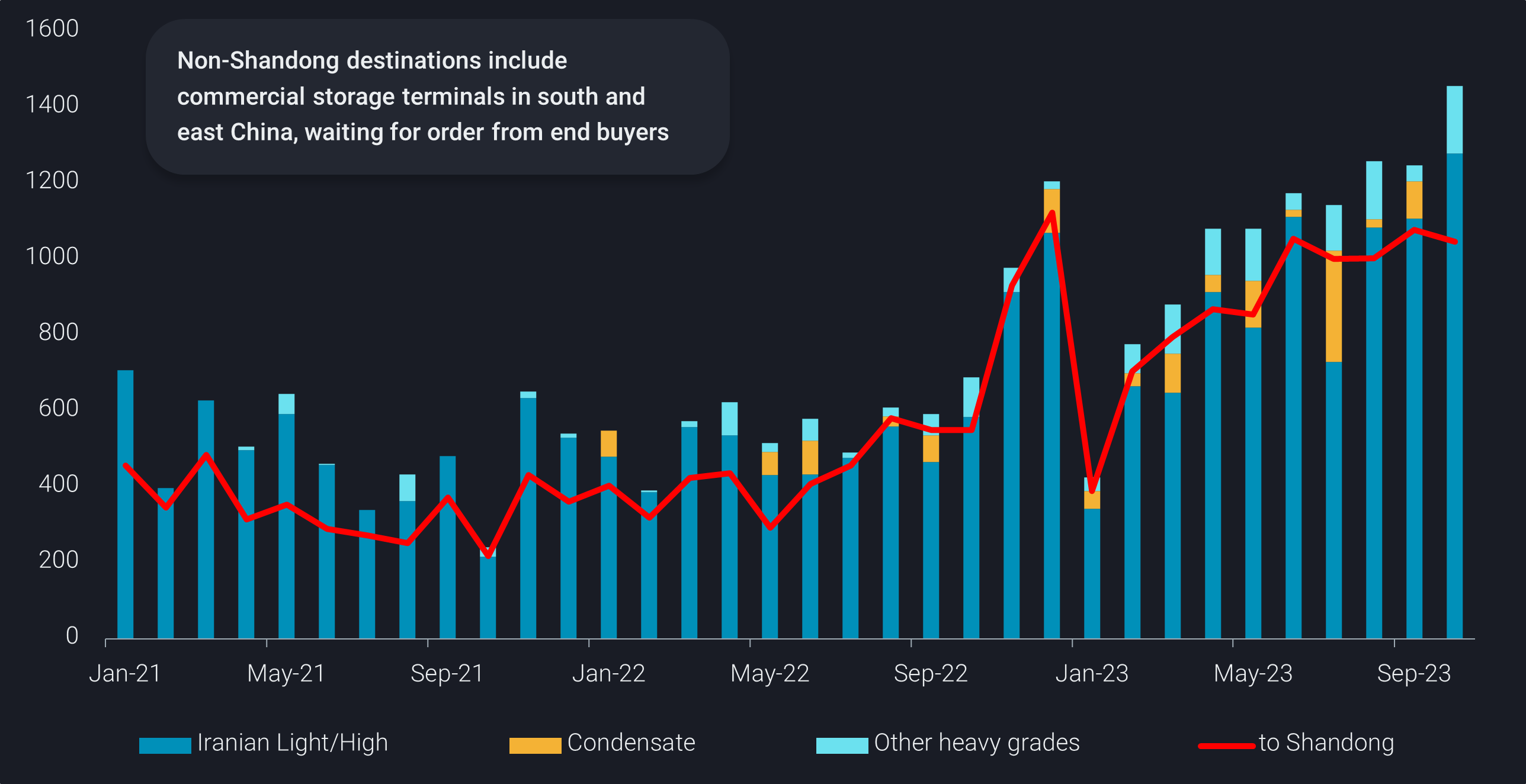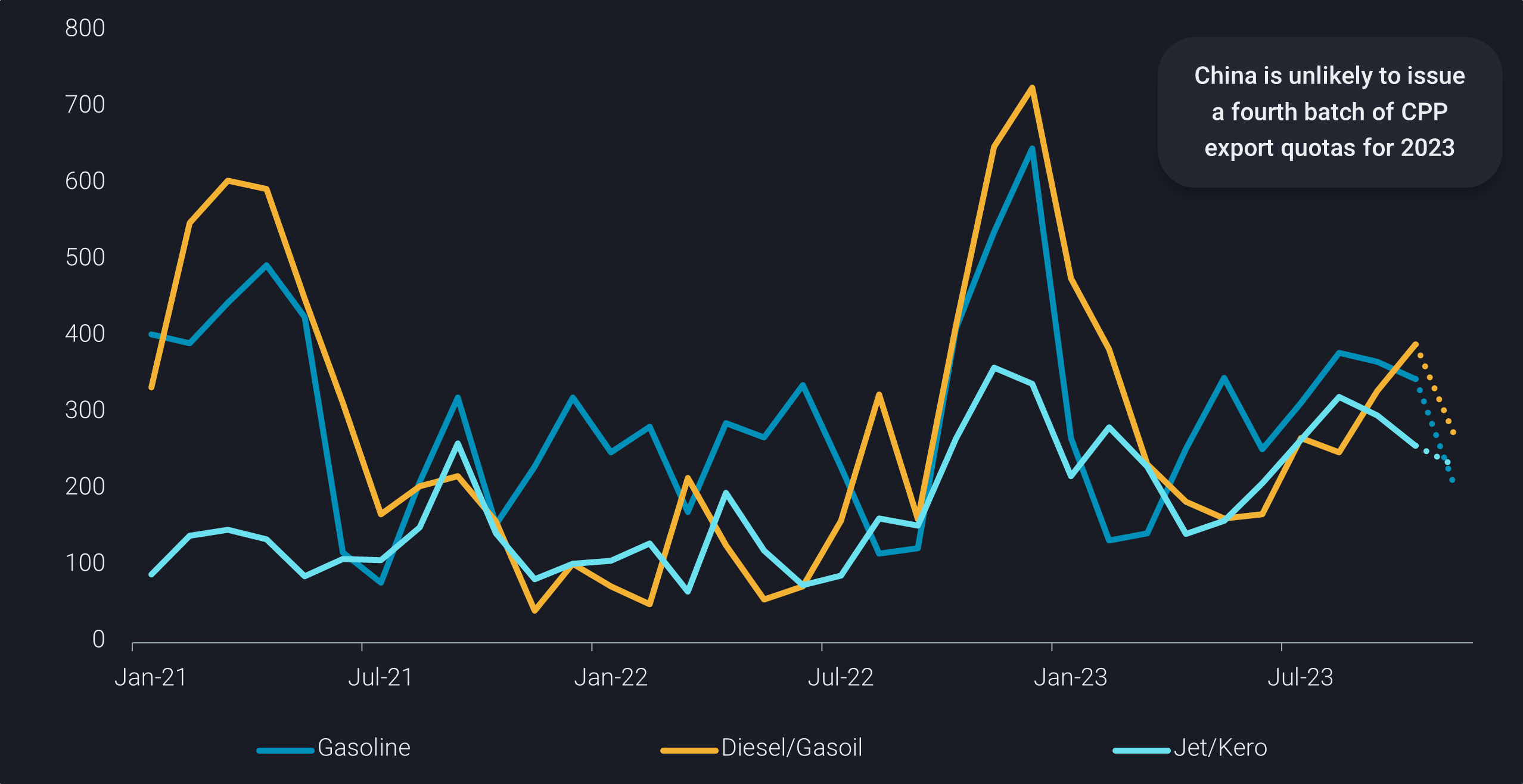China’s seaborne crude imports for October exceeded 10.7mbd, a slight improvement over September’s just under 10.5mbd, as imports from the OPEC suppliers (excluding Iran and Venezuela) rebounded. This also marks the ninth consecutive month of year-on-year growth of over 10%, supported by a series of incentives to boost the country’s economy.
Nevertheless, China’s onshore crude stocks started to accumulate since 2H October, following two consecutive months of decline at an average rate of over 800kbd since late August. This stockbuild was a result of falling refining run rates, with refiners, especially Shandong teapot refiners, grappling with narrowing profit margins. The stockpiles increased by 2mb over the two-week period, reaching 958mb as of Nov 2. This shift in stock figures implies a reduction in refining runs of approximately 1mbd, equivalent to about 6-7%, across both state-run and independent sectors.
Challenges loom for Shandong teapot refiners
Shandong teapot refiners have been struggling with shrinking profit margins this year, which led to a rapid buildup of crude oil stocks in Q2 and slower destocking rates compared to other regions since August.
Concerns about the redistribution of Venezuelan crude after the U.S. relaxed sanctions on the South American nation, coupled with persistent competition for limited Russian crude supplies, resulted in Iran-China crude flows reaching a new record of over 1.4mbd in October.
Oil traders anticipated higher demand from Shandong teapots due to tight supplies of other discounted grades. However, the decrease in direct Iranian shipments to Shandong and the increase in barrels stored in commercial storage facilities suggest rather sluggish demand among the teapots.
It is likely that Shandong teapot refiners will further reduce their run rates in November, following a drop in the CDU (Crude Distillation Unit) utilisation rate to 57% during the week of October 30, according to OilChem data. This decline came after operating above 65% in September and 1H of October, as refining profits continue to plummet.
State-Run refiners grapple with export quota constraints
Meanwhile, China’s clean fuel exports will remain capped for the remainder of 2023, as refiners have not yet received the long-awaited fourth batch of export quotas or approvals to convert their remaining LSFO quotas for CPP exports.
Market participants have indicated that both Chinese state-run refiners and non-Shandong independent refiners are planning to reduce run rates in November, with deeper cuts expected among independent refiners. State-run refiners may only reduce production by 2-3% to address declining domestic margins, tight export quotas, and the need for seasonal maintenance.
Massive product exports from Northeast Asia, thanks also to South Korea, have not only helped to counterbalance the impact of refinery maintenance in the Wider Arabian Sea region, but are also weighing on refining economics across the Pacific in the Americas. As a result, any decline in runs and product exports from China would be welcome news for refiners, pretty much around the globe.


